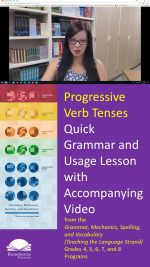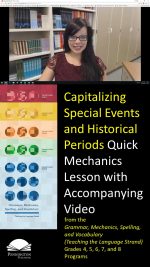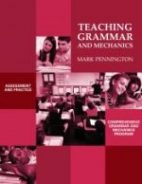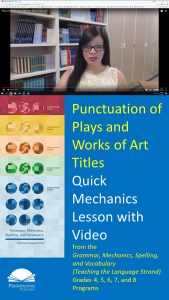Exclamation Points
Exclamation Points
Play the quick video lesson HERE and click the upper left back arrow to return to this lesson.
Common Core Language Standard 2
The exclamation point is one of the most misused and overused punctuation marks. Too often students add them when they are unnecessary to try and add excitement or surprise to dull writing. You probably could avoid using exclamation points for the rest of your life, if you chose exciting and specific nouns with surprising and vivid verbs. Oh… and another misuse: Don’t use more than one exclamation point. Using three exclamation points does not make a sentence three times as exciting or surprising. Despite what the authors of comic books do, we don’t use more than one punctuation mark when just one will do nicely.
Now let’s read the mechanics lesson and study the examples.
Use one exclamation point to show surprise or strong emotion in an exclamatory sentence or following an interjection. An interjection is a short sentence fragment used to show extreme emotion and is often used within dialogue. Examples: That is amazing!
Now circle or highlight what is right and revise what is wrong according to mechanics lesson.
Practice: Wow! Oh my gosh! I can’t believe she said that! That whole scene was disturbing!
Let’s check the Practice Answers.
Mechanics Practice Answers: Wow! Oh my gosh! I can’t believe she said that! That whole scene was disturbing.
Now let’s apply what we have learned.
Writing Application: Write a sentence using an exclamation point.
*****

Pennington Publishing Grammar Programs
Teaching Grammar, Usage, and Mechanics (Grades 4, 5, 6, 7, 8, and High School) are full-year, traditional, grade-level grammar, usage, and mechanics programs with plenty of remedial practice to help students catch up while they keep up with grade-level standards. Twice-per-week, 30-minute, no prep lessons in print or interactive Google slides with a fun secret agent theme. Simple sentence diagrams, mentor texts, video lessons, sentence dictations. Plenty of practice in the writing context. Includes biweekly tests and a final exam.
Grammar, Usage, and Mechanics Interactive Notebook (Grades 4‒8) is a full-year, no prep interactive notebook without all the mess. Twice-per-week, 30-minute, no prep grammar, usage, and mechanics lessons, formatted in Cornell Notes with cartoon response, writing application, 3D graphic organizers (easy cut and paste foldables), and great resource links. No need to create a teacher INB for student make-up work—it’s done for you! Plus, get remedial worksheets, biweekly tests, and a final exam.
Syntax in Reading and Writing is a function-based, sentence level syntax program, designed to build reading comprehension and increase writing sophistication. The 18 parts of speech, phrases, and clauses lessons are each leveled from basic (elementary) to advanced (middle and high school) and feature 5 lesson components (10–15 minutes each): 1. Learn It! 2. Identify It! 3. Explain It! (analysis of challenging sentences) 4. Revise It! (kernel sentences, sentence expansion, syntactic manipulation) 5. Create It! (Short writing application with the syntactic focus in different genre).
Get the Diagnostic Grammar, Usage, and Mechanics Assessments, Matrix, and Final Exam FREE Resource:
![]()








